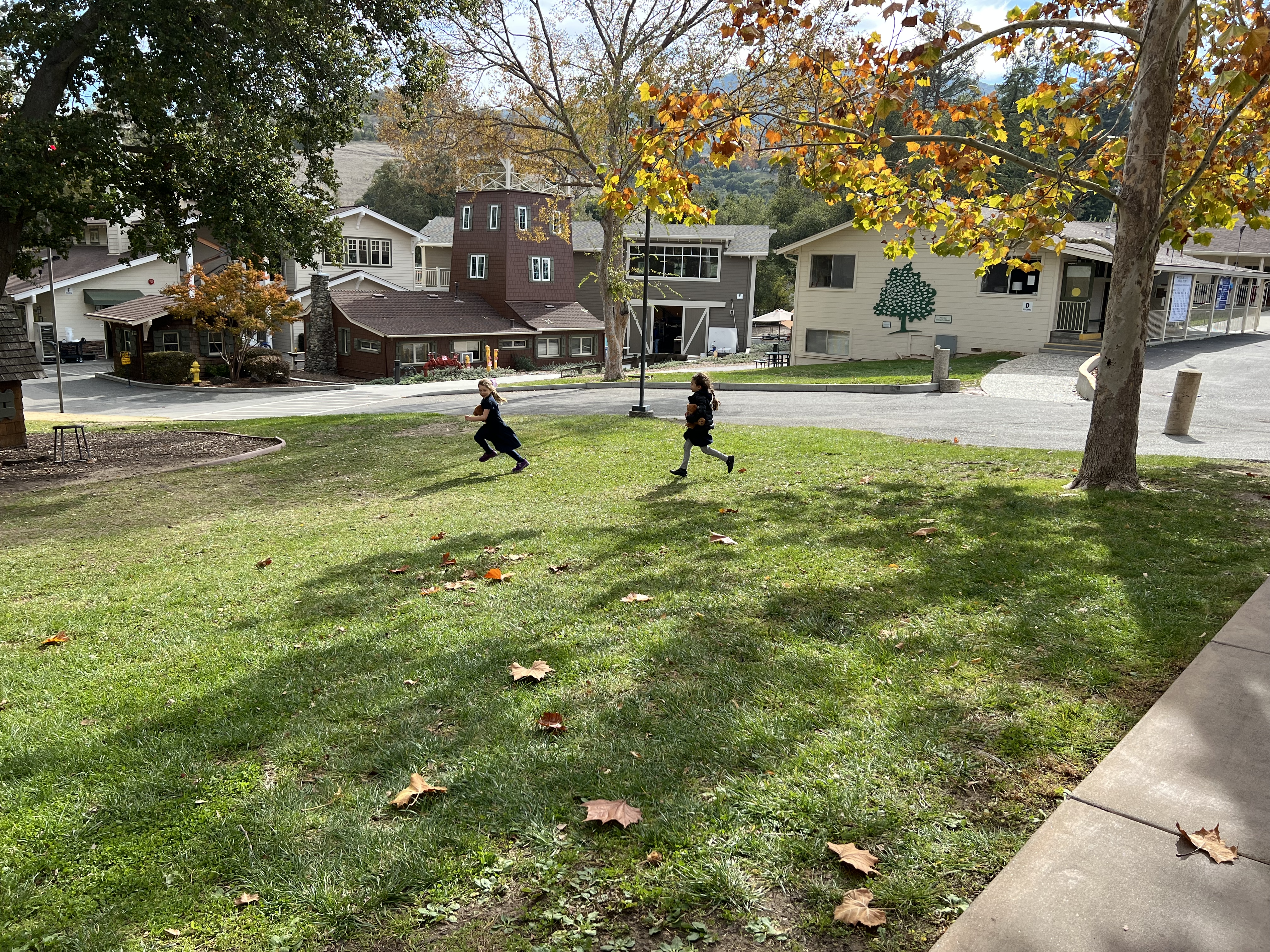By Bill Selak, Director of Technology
Hillbrook students are using a new language to express themselves, coding. All across the campus, students are learning to program and code in innovative and age-appropriate ways. Carefully crafted experiences have opened up opportunities for our students to take coding and programming – and make it a deeply personal and imaginative reflection of their passions, personalities, imagination, and creativity. Through coding, Hillbrook students are seeing themselves as creators, instead of just users of technology.
This past Monday, Hillbrook kicked off a two-week long dive into coding for students of all ages called “Everyone Can Code.” This hands-on, cross-curricular exploration was inspired by December’s “Hour of Code,” a nationwide initiative where students around the world spend one hour learning to code as part of an effort to celebrate computer science in K-12 schools. Hillbrook students have participated in the “Hour of Code” for the past four years with an enthusiasm that inspired the school to offer more. Hence, the two-week “Everyone Can Code”, an endeavor that exemplifies the Hillbrook experience as students are encouraged to dive deeper into individual fascinations and passions related to coding and computational thinking.
Teachers and staff mapped out two weeks of hands-on coding opportunities for our curious learners in JK-8th grade, with an emphasis on individualizing the experiences so each child is engaged and empowered. The result has been a uniquely Hillbrook experience that makes learning coding meaningful and fun.
Some highlights from across grade-levels include:
- A wide variety of hands-on programming experiences, including building a computer with Piper, a kit that uses Minecraft on a Raspberry Pi, or creating unique gadget using LittleBits, magnetic building blocks that create a circuit and include lights, motors, and switches.
- Junior kindergarten and kindergarten students took advantage of early coding experiences and enjoyed age-appropriate and friendly hands-on programming opportunities with BeeBots and the Code-a-pillar.
- 1st-4th grade students were immersed in a number of different coding and programming activities that spoke to their individual interests and fascinations. Among them, they were challenged to create mazes and code Spheros to navigate through them. Some students stretched their creativity and wrote a script and programmed a robot to act it out.
- Meanwhile, 3rd and 4th graders teamed up with 1st and 2nd graders as they collaborated together to code, fly, and land drones on faraway targets. We also had students at work coding Sphero robots to drive through paint, creating original artwork!
- Middle school students visited Google to see how code makes a difference in the world. The inspiring field trip saw students meeting with engineers, programmers, designers, and marketing professionals and experiencing firsthand how Googlers collaborate on projects.
- In week two of “Everyone Can Code” middle school students will expand upon and delve deeper into computer science, choosing from 12 different coding stations to create individual experiences.
Coding is a natural fit at Hillbrook where students are accustomed to asking questions and having the freedom to explore areas of passion or curiosity. Though “Everyone Can Code” provides two-weeks of focused activities, meaningful programming pursuits happen year-round at Hillbrook.
Responding to the overwhelming enthusiasm of students, 1st grade has introduced more coding activities into the classroom. The children utilize Osmo, which allows them to move physical objects, characters, and blocks in order to code and sequence – and an app responds. The objects show up on-screen and mirrors the activity that the students have “coded” in real life.
With the guidance of robotics teacher Shea Ellerson and middle school art teacher Ken Hay, 8th grade geometry students used Python code to create original digital artwork, each one as unique and distinctive as their creators. The students then laser-etched onto acrylic and shared their work – a collaboration of mathematics, coding, and art, displaying them in the Front Office.
In 2nd-4th grade, students have ICE and ACE hours where they can discover what sparks them and dive into it. Recently, a 4th grader took a risk and embarked on the process of making his own video game. His hands-on coding challenge during “Week of Code” inspired him to ask questions about what it would take to program an entire game and motivated him to start this passion project. His teachers embraced the idea and gave him the resources to continue pursuing this fascination.
Meanwhile, 2nd grade took their experiences with coding and used them to transform their class community project. Students took the project, which once took the form of a Roxaboxen cardboard village, and transferred the entire experience into Minecraft, designing and coding an entire community of people, animals, products, and places. The new endeavor has all of the collaboration and group problem solving, as well as the crafting, real-life dynamics, and needs a self-created community faces, but with a distinct advantage: the students observed that the Minecraft community lived beyond the lifespan of weather-worn cardboard. The students now have a “living” artifact that they can continue iterate, connect over, and share with their peers and others.
As a school, we aim to continually deepen and enhance learning experiences and growth opportunities for our community of learners. “Everyone Can Code”, in its evolution from an hour-long instruction to a two-week exploration, is helping students to develop a personal fascination with the wide world of programming and develop a deeper relationship with the kind of innovative thinking that will continue to feed their growth, imagination, and inspiration so they can make a difference in this world.
As our middle school students embark on a second week of hands-on experiences during “Everyone Can Code”, we are thrilled to see the discoveries and projects that come forth from this time to create, make, and collaborate. With their imaginations as the only bounds, we know anything is possible!
If you’d like to learn more about or participate in Computer Science Education Week at home, visit hourofcode.com.

